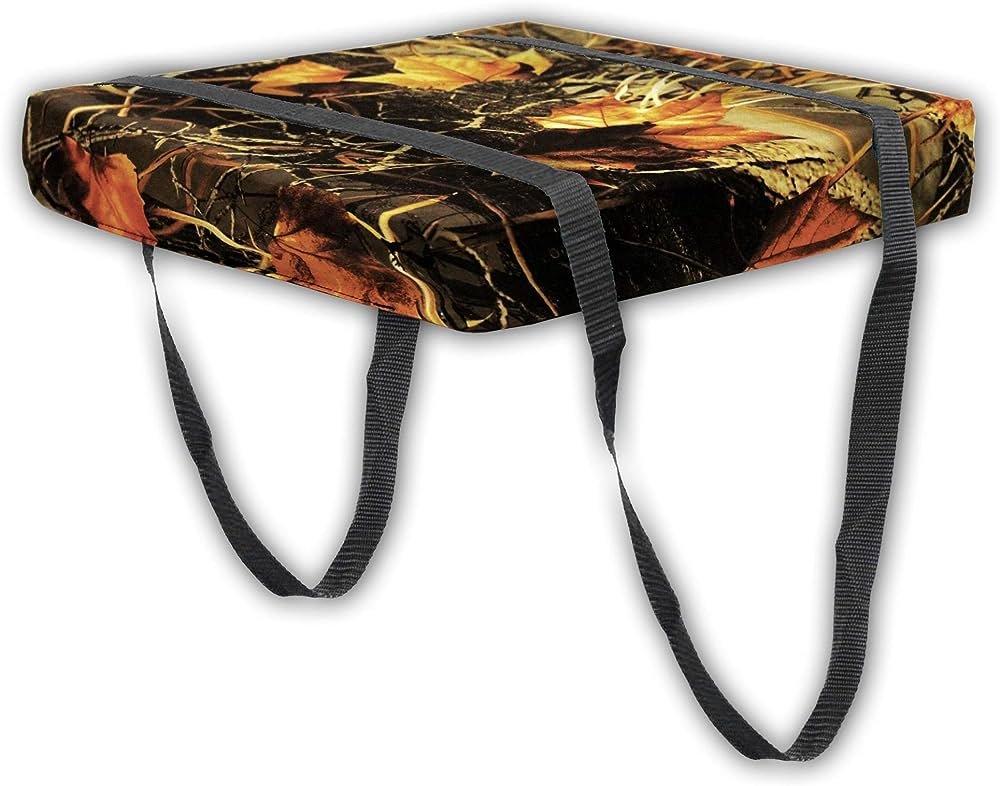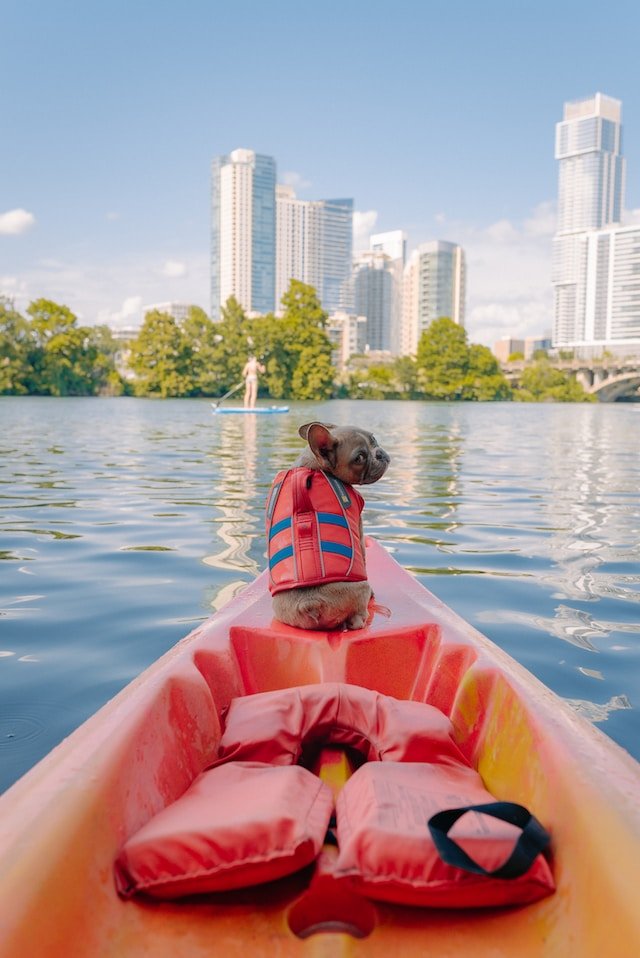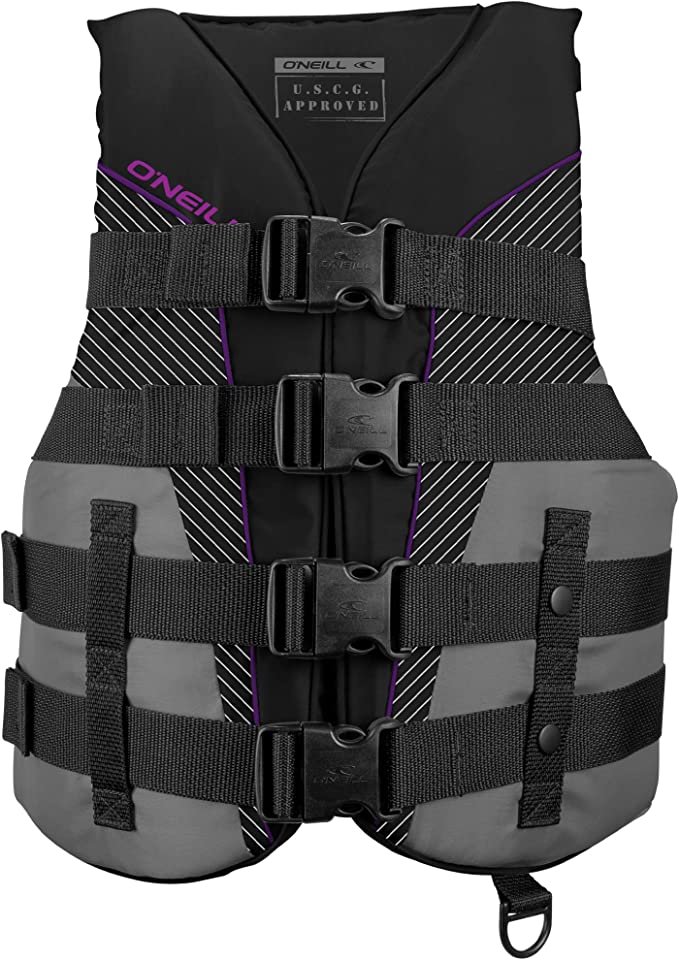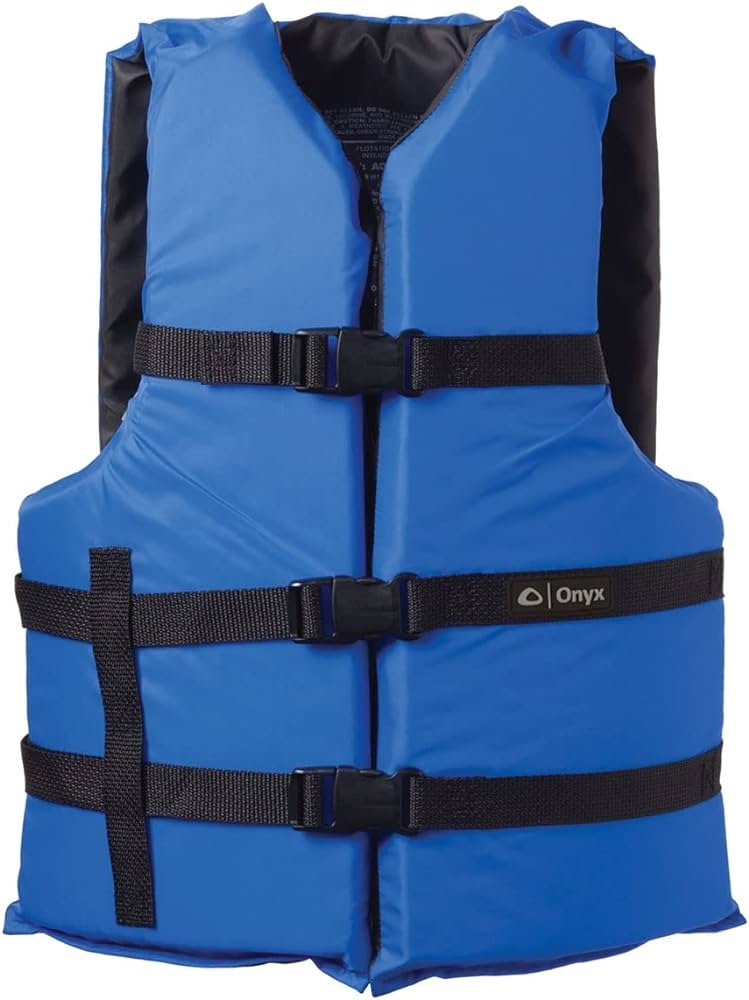What Is The Main Advantage of a Type IV PFD?

No matter the type of vacation you decide to take, whether recreational or sports, your safety is the most important thing to put into consideration, especially if you’re spending it on the water. For the sake of this article, we’ll be dwelling on on-the-water excitements alone.
To ensure your safety on the water, you must carry a PFD (Personal Floatation Device) everywhere you go on it. Out there in the stores, you will find different PFD types. One of them is the Type IV, an ergonomically designed type for anyone going afloat.
STRUCTURE OF TYPE IV PFD
That said, you may want to ask, what are the advantages of the Type IV PFD over other available types currently on the market? Don’t worry. This article is will provide answers to that question and much more from you.
Since the Type IV PFD type is typically not constructed to be worn like others, anyone can simply use it to stay protected- whether a child or an adult of any physical weight, size, or height.
It is the type of people who fall overboard used to keep from drowning and get out of the water safely. That is the main advantage of having a Type IV PFD.
We know many people have so many questions about the numerous courses to take on boating licensing. And we understand that it can be difficult to know what they all mean, and what relationship they have with ensuring your safety.
That is what this article is about, so you can learn more about the advantages of having a Type IV personal floatation device on you, and how to properly put it to use. But first, let us take a look at what a Type IV PFD means.
The United States Coast Guard(USGC) defines Type IV PFD as the fourth classification level for Personal Floatation Devices. It is also referred to as a TFD, which is a Throwable Floatation Device, and popularly called CFR, which is a Circular Floatation Device in swimming pools.
It is stated that one Type IV PFD must be present on any recreational vessel longer than 16ft. In essence, it is compulsory for anyone who’s going on a water adventure, especially swimming, to have a personal floatation device every time.
Unlike others, the Type IV PFDs are not worn but are used as guards in the water for people who cannot swim or for those who accidentally fall overboard.
Moreover, if you have 10 people onboard your vessel, you must provide a Type IV PFD or any other type for everyone. Plus, you must include a PFD for animals, if you have any onboard too, making sure it fits properly.
WHAT ARE THE DIFFERENCES IN FEATURES BETWEEN A TYPE IV AND OTHER PFDs?
One of the main differences between Type IV PFDs and other PFDs is that they are throwable rather than wearable. Other types of PFDs are generally worn so that they can provide buoyancy immediately if you fall into the water.
A Type IV PFD is designed to be thrown to a person in the water, for example, if they have fallen overboard. These types of PFDs can also be used to help someone if they get into difficulty while swimming or even to provide additional help in a rescue situation to someone who is already wearing a life jacket.
Type IV PFDs have to be visible and easily accessible on boats longer than 16 feet but it’s recommended that smaller boats also have one on board in case of emergencies.
Another difference in features is that a Type IV PFD if it’s a ring buoy style, must be either orange or white. Other styles of Type IV PFDs can be other colors, just like other types of wearable PFDs.
DIFFERENT KINDS OF TYPE IV PFDS
Type IV PFD can be classified majorly into three. Although there are many other kinds made and sold by different companies, only these three are certified by the US Coast Guard for use.
Horseshoe Buoys
Clearly, the name of this kind of Type IV PFD is derived from its shape. It is designed to resemble a horseshoe in shape, using a cell plastic as the core and a PVC-coated layer as the cover. This kind comes in a variety of colors to choose from but people often prefer the yellow, red, and white colors for easy sighting.
Buoyant/Floaty Cushions
The cushion comes in a square shape with no holes in it. More like the one you can sit on like chair cushions only they’re for swimming. This type is uniquely designed with double straps for arm insertions.
The straps are such that you or everyone can put their hands on their cushion to keep it from floating away or to stay afloat in the water if they can’t swim. However, to use it, you don’t need to have your hands on the straps.
You can as well have the PFD smartly positioned underneath your chest and swim through the water atop it. Additionally, the surface space allows a substantial part of your body to completely rest on it so that all you need to do is just float.
Ring Buoys
At least once before now, you must have seen this class of Type IV PFDs because they’re arguably the most used class in the world. They’re the ones you often see on most watercraft, docks, and swimming pools.
With ring shapes like doughnuts, the latest models of these buoys are equipped with activated lights that enhance sighting, especially in the case of night rescues.
WHAT IS THE MAIN ADVANTAGE OF A TYPE IV PFD?
Many people are still not clear on the main reason a Type IV PFD is deemed necessary for everyone on a swimming, boating, or kayaking adventure. Some believe that once they’re in their life jacket, there’s no need for a Type IV PFD again.
However, we cannot compare life jackets with Type IV PFDs. Type IV PFDs are different from other types of personal floatation devices for several reasons. The main three advantages of a Type IV PFD are mentioned below:
- No Size Restrictions
The first main advantage of a Type IV PFD is that there are no restrictions on height, weight, and age for people who can use it. Its construction is such that you do not need to wear it rather, you get ahold of it in case there’s a need for use.
One may be tempted to see Type IV PDFs as inferior to life vests in that they do not have special sizes and designs for certain persons like kids and women found in life jackets but that is not entirely true.
They work together. With Type IV PFDs, however, you do not have to worry about sizes, heights, and weight. They’re designed to be one-size-fits-all.
Nevertheless, that doesn’t mean you should ditch life jackets on your next adventure. Even if you and everyone else onboard have a Type IV PFD each, you should have life jackets on as well.
Type IV PFDs or Throwable PFDs are designed to serve as emergency support to wearable PFDs and life jackets. Furthermore, ensure you have a life jacket for animals if you have them on board.
- Toss and Pull/Tug
Your Type IV PFD like the buoyant cushion or the ring buoy can be safely secured if not in use by tying a rope to it. This ensures that when the PFD is tossed to the passenger who falls overboard, those still on board or a rescuer can easily tug/pull them out of the water while they hold on to the Type IV PFD.
This method of rescue saves whoever is rescuing the hassle of jumping into the water and swimming back and forth. Having to swim to the victim and then swim with the victim to the boat or canoe can be so tiring for the rescuer in addition to placing them both in a difficult and dangerous situation.
It is important to note that you may have to buy the rope separately if need be, as not all Type IV PFDs have it included in their package. In case there’s a need, you may find ropes sold by buoy companies that do not include one in their package.
- Location Indicator
There may be an issue of accidental tripping as you go out to enjoy your break on the water and if this occurs, those on board can toss the Type IV PFD to where the victim is or the position they’re last seen should they not be able to swim or should it be in the night.
The ability of the Type IV PFD, with activated light, to serve as an indicator is a great addition for safety assurance as it helps the vessel operator move back to the spot and carry out a rescue.
However, the rescuer may encounter difficulty locating the exact place the Type IV safety device was thrown because the waves or current can easily carry it away to another spot. This is a somewhat big issue because it might take a while to locate a victim who is drowning underwater.
After all, they can’t swim. But above this, this Type IV PFD has proven to be a valuable gear on several occasions.
If you look at it this way maybe you will understand how useful this device is:
Say, you’re the only one left on board after the incident and you immediately tossed a Type IV PFD but the person couldn’t catch it and you turn your vessel around to go for them but you notice that the device already started moving towards a particular direction that could give you an idea of the direction of the current and the understanding that as the device moved towards the direction, the victim also could be swept towards the same.
This could allow you to launch a rescue search, and save the victim on time. Another example is if a lone boater who can’t swim falls overboard at night with their Type IV PFD on them. With the activated light on the device, you could easily and quickly launch a rescue for them, even if you’re far away when you see it.
GUIDELINES ON THE USE OF TYPE IV PFDs
The United States Coast Guard (USCG) does not demand that a Type IV PFD be mandatorily worn for all onboard vessels like kayaks or canoes(except for vessels greater in length than 16 feet). And there are no restrictions placed on the type of throwables PFDs to use.
However, it is imperative that everyone on board uses a type of PFD (wearable or Throwable) or life vest. This helps guarantee the safety of the paddler and others.
Buoyant cushions are not recommended on large expanses of water. Although some watercrafters bring them to the water shores to be adopted as a knee cushion or seat cushion, it is dangerous, and not USCG recommended. Extra height might affect the canoe or kayak balance and cause damage to the buoyant cushion.
For every trip, you go on, ensure that the Type IV PFDs on board are taken out of their packings, exposed, and readily reachable to everyone on board in case of any emergency. Avoid keeping them under the vessel seat, cockpit, lockers, or anywhere not visible to the eyesight. We recommend that you have readily tied a rope to all of them for a quick rescue.
Whether your state has a special law for kids or not, the United States Coast Guard law is valid, which says in effect: that children going on the water for various activities under the age of 13 must have a life jacket on.
Also, remember that Type IV PFDs are great, and a great accessorial addition, but you cannot substitute a Type IV PFD for your child’s life vest. Ensure you both wear your life jackets and have a Type IV PFD as a backup.
HOW TO SELECT AND CARE FOR YOUR TYPE IV PFD
The Type IV PFDs are great. Life may depend on them. But as important as they are, they’re interestingly affordable, and not just that, they are durable too. Their affordability gives you the chance to purchase any one of your choices with ease instead of an ordinary cushion as an alternative.
Selecting
In selecting the right type IV PFD for you, we have put together tips that may be useful. Find them below:
- Choose a US Coast Guard-approved Type IV PFD
- Pick a Type IV PFD with a bright color and/or activated light that will enhance eye sighting should there be an emergency.
- Ensure to go for a type IV PFD that will provide adequate buoyancy for your weight. An average fully grown adult requires a buoyancy of about 7-12 pounds to stay balanced. Type IV PFDs are usually 16.5 pounds in weight, boat cushions are similar to 18 pounds in weight.
Caring For Your PFD
In caring for your Type IV PFD, here are a few tips:
- After every use of your device in saltwater, ensure to wash your device using fresh water.
- Dry thoroughly. Direct sunlight is recommended only if it’s not going to be for a long time.
- When it is dry, check thoroughly for any form of damage.
When to use and when not to use a Type IV PFD: the dos and don’ts
DOs
1: Use your type IV PFD where or when the water is calm
Uncalm waters, that is, fast-moving waters may not allow the device to serve its purpose when it is tossed to the victim, in case of emergency.
2: Use the device when your activities are under the supervision
The Type IV PFD is a perfect, easy-to-use, accessory to have during activities like kayaking or boating. However, being alone in the canoe or kayak may not present the efficacy of using the device.
The effectiveness of using the device is majorly dependent on the availability of others who can toss and pull you out of the water into the vessel through the rope attached to the PFD.
3: Go on your adventure with other boats around
The presence of other water adventurers and their boats around helps ensure your safety. The closer you are to others during an accident, the better the chances of being rescued immediately, should you be the only one on board?
DON’Ts
1: Avoid using your safety device when there’s a report of bad weather and/or maximum water disturbance.
Tossing the safety device to the victim when there are high water waves and/or strong winds may not be effective, as it can be blown or taken away easily. The best thing is to stay away from the water in the first place, whenever there’s a report of unfavorable weather conditions.
2: Don’t use the PFD on anyone tired, exhausted, or unconscious on board.
Tired, sleepy, or unconscious persons on board might not be able to get a hold of the PFD quickly if thrown at, defying the purpose of the device for rescue. Therefore, ensure that before you set off into the water, everyone who fits in this category takes their rest on the shoreline and does not join on the adventure.
We believe by now you have understood the main advantage of the Type IV PFD, and how important being with one is to every watercrafters.
However, despite their availability and affordability, many on-the-water cruisers still do not include these devices in their gear before setting off on the water. A report in the US showed that of the drowning cases reported, 80% of the victims were without a life vest on.
Another report in the UK showed that about 50% of all boaters refuse to be in their life vests. We have, through adequate research, found a guiding law for a few selected states in the US.
The laws differ from state to state and the penalties for defaulters too. This guide is particularly useful if you’re heading for a water adventure in another state different from yours.
State Laws on life jackets and PFD usage
ALABAMA
Kayakers and those on other personal recreational watercraft are required to wear them. Children under the age of 8 must wear PDFs all the time they’re in a moving vessel on the water, except in enclosed cabins.
Furthermore, anytime you’re below a dam with 800 feet, you must wear a protective device. Depending on the gravity of the offense, penalties range between $25 and $100.
ALASKA
The Federal Law states in Alaska; that anyone at 13 years or below must be in a protective device when they’re being towed, or on the open deck. Defaulters are charged with fines starting from $100. The fine is likely to increase depending on the offense.
ARIZONA
At all times in a moving vessel, kids from 12 years and below must be in their PFD. PWC operators and water skiers are also not left out.
ARKANSAS
The only time you and anyone 12 years and under are exempted from wearing a protective device in Arkansas is when you’re in an enclosed cabin. You are exempted if you’re confined by boat railings provided the vessel is not underway. PWC users and water skiers are also not left out.
CALIFORNIA
Unless participating in a state or Federal sanctioned water competition, all boaters including those below 12 years must be in PDFs, irrespective of the vessel length. Depending on the seriousness of violations, fines can get as high as $150.
COLORADO
Children 12 years and under are only exempted from wearing a protective device in any moving watercraft if they’re below deck or in a cabin that is enclosed. Adults are also not left out; they must wear their PFDs at all times. The fines for violations range from $50 and above.
FLORIDA
Federal laws set the age at 13. If you have a kid under the age of 6 onboard a vessel below the length of 16 feet, they must wear a life vest approved by the USCG. Water skiers and PWC operators are also not left out. Violators are fined with a rate starting from $50 which can go up depending on the level of offense.
GEORGIA
In Georgia, those using water skiers and PWCs must wear as well as the boater who is out on water areas that are tagged “hazardous areas”.
Children under the age of 10 on a moving vessel must also put the device on, except in cases where the vessel has an enclosed cabin. Defaulters are charged with a misdemeanor.
MARYLAND
The fines for defaulters of the PFD law in Maryland vary. The Law states that anyone on personal recreational watercraft must have their PFD on. In addition, children under the age of 13 must wear too when the vessel has set off.
MASSACHUSETTS
The state law in Massachusetts requires that PWC users, kayakers/boaters, or anyone being towed on the water must put on PFDs. Kids of 12 years and below must also wear them (wearable for children). Defaulters are liable to a fine of up to $50.





